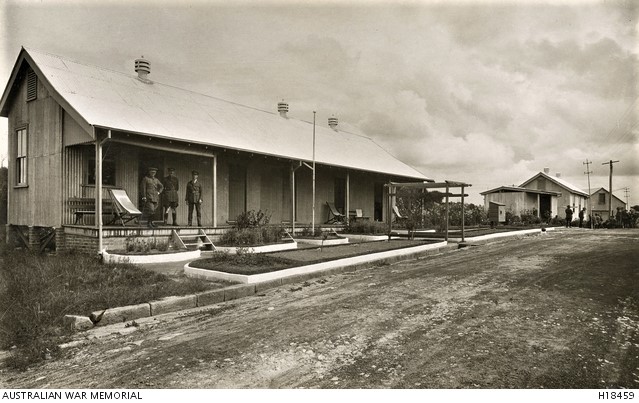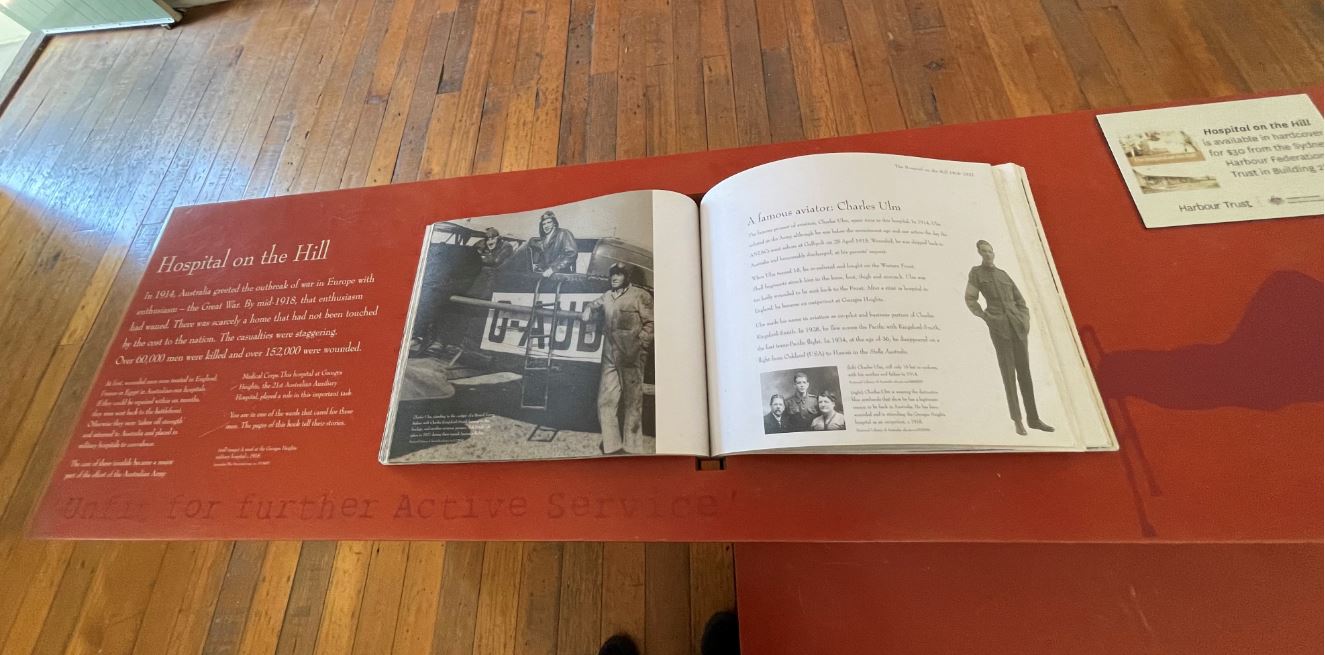 Cruden, James C (1914). Portrait of Charles Ulm in military uniform with his mother, Ada Emma Ulm, ca. 1915. Trove, PIC/8392/364 LOC Album 1033/5
Cruden, James C (1914). Portrait of Charles Ulm in military uniform with his mother, Ada Emma Ulm, ca. 1915. Trove, PIC/8392/364 LOC Album 1033/5
Charles Thomas Phillippe Ulm was born in 1898, the son of Gustave, a Parisian-born artist1, and Emma Ulm. His family moved from Victoria to ‘Leona’, 27 Keston Avenue, Mosman. Working as a clerk in a stockbroking company at the outbreak of war, he was swept up in the enthusiasm to serve his country and restore the honour of his ancestral home.
 Portrait of Charles Ulm in military uniform with riding crop, ca. 1915 / James C. Cruden Trove
Portrait of Charles Ulm in military uniform with riding crop, ca. 1915 / James C. Cruden Trove

National Archives Record NAA: B2455, ULM CHARLES THOMAS PHILLIPPE “Charles Jackson”
At the time, recruiting staff did not have the means, time or inclination to check the bona fides of this 5’ 10” healthy lad. Charles was welcomed as the latest recruit to replenish A.I.F. troops at the Gallipoli landing. He was shipped out on the HMAT Euripides on 31 October 1915.
 Charles Ulm in military uniform, seated on a camel near the Great Sphinx, Cairo, Egypt, 1915 Source: NLA nla.pic-vn3930594
Charles Ulm in military uniform, seated on a camel near the Great Sphinx, Cairo, Egypt, 1915 Source: NLA nla.pic-vn3930594
After landing at Gallipoli, Charles was buried alive by an exploding shell.3
Whilst recovering from his injuries, he contracted a medical condition common to Australian soldiers engaging in recreational pursuits.
 National Archives record showing reason for discharge- ‘Veneral’ – no pun intended.
National Archives record showing reason for discharge- ‘Veneral’ – no pun intended.
Charles was declared unfit and sent home, his parents insisting on an honourable discharge as a minor4.
 The National Archives has records of correspondence between Ulms parents and the authorities in written and typed letters. There was obviously a few problems with the Jackson non-de plume!
The National Archives has records of correspondence between Ulms parents and the authorities in written and typed letters. There was obviously a few problems with the Jackson non-de plume!
They consented to Charles’ re-enlistment once he had turned 18. As the story goes, his father, born in Alsace-Lorraine, positively encouraged him to do so.5 His grandfather had fought in the Franco-Prussian War of 1870
Undeterred by his previous experiences, Charles signed up again using his real surname, joining the 45th Battalion, bound for France.6

 Top:Members of the 45th Battalion in the advanced trenches at Garter Point, in the Ypres Sector. AWM E00842” Below: Medical details of the 45th Battalion sheltering in a trench at Anzac Ridge, in the Ypres Sector” (Official caption). AWM E00839
Top:Members of the 45th Battalion in the advanced trenches at Garter Point, in the Ypres Sector. AWM E00842” Below: Medical details of the 45th Battalion sheltering in a trench at Anzac Ridge, in the Ypres Sector” (Official caption). AWM E00839
In France he was again wounded:
…this time severely, his mates found him buried by earth thrown up by a German shell, with only one foot sticking out. It is said that he had suffered from shell shock but overcame it with his youth and resilience.7
 National Archives record showing type of injury and location ‘Corbie Canal France’
National Archives record showing type of injury and location ‘Corbie Canal France’
Ulm spent time in the Georges Heights Hospital recovering from war wounds. He was, however, to be troubled by some of his injuries for the rest of his life.

 Above: The Headquarters building of No 21 Australian Auxiliary Hospital with three AIF officers standing on the verandah. Source: AWM H18459 The soldier to the right in the old photo above has been identified as Lt Alan Brierley. Below: Photo taken by author at permanent exhibition at Georges Heights Hospital.
Above: The Headquarters building of No 21 Australian Auxiliary Hospital with three AIF officers standing on the verandah. Source: AWM H18459 The soldier to the right in the old photo above has been identified as Lt Alan Brierley. Below: Photo taken by author at permanent exhibition at Georges Heights Hospital.
Whilst in Britain, it is said a friend in the RFC took him on several joy-flights. Ulm considered this a ‘revelation’ and immediately perceived the ‘vast potentialities’ of ‘money and public prominence’ aeroplanes represented.8
But that’s another story…
Follow the Charles Ulm story

“Southern Cross” arriving at SYDNEY, 10th June, 1928. Charles Ulm – photographs and albums, 1928-1934, State Library of NSW
- Charles Ulm: a flying life
- ‘Right royal welcome’ to Pacific fliers ‘Smithy’ & ‘alphabet’ Ulm
- coming soon…Charles Ulm: flights with Kingsford Smith and P.G. Taylor
- coming soon…Book review: Flying the Southern Cross
Footnotes
1 John McCarthy, ‘Ulm, Charles Thomas Philippe (1898–1934)’, Australian Dictionary of Biography, National Centre of Biography, Australian National University, http://adb.anu.edu.au/biography/ulm-charles-thomas-philippe-8896/text15627, published first in hardcopy 1990, accessed online 14 September 2015
2 National Archives Record NAA: B2455, ULM CHARLES THOMAS PHILLIPPE “Charles Jackson” http://recordsearch.naa.gov.au/SearchNRetrieve/Interface/ViewImage.aspx?B=4028767 retrieved 14 September 2015
3 Molkentin, Michael, Flying the Southern Cross: Aviators Charles Ulm and Charles Kingsford Smith, National Library of Australia; 2002.
4 Ibid.
5 John Ulm, talking with Michael Molkentin, The Charles Ulm story, September 2012. John Ulm talking with Michael Molkentin in 2012, mentioned that whilst convalescing at 35 Prince St., Charles (called “C.T.P” by the family) may have had an association with the Hospital at Georges Heights, Mosman. John also recounted (through his mother words) that Charles’ Father , himself a native of Alsace-Lorraine, had said to C.T.P. “What are you doing here when you still have two arms and legs.?!” encouraging him to re-enlist, go over to France and get stuck into “The Boche”…
6 In 1934 Charles wrote that he inherited that spirit of restlessness which underlies the original concept of the majority of plans and enterprises from his grandfather who died without ever experiencing that sensation men label as ‘fear’
7 Rogers, Ellen, Faith in Australia Charles Ulm and Australian Aviation, Book Production Services; Crows Nest, 1987, p10-16
8 Molkentin, Michael, Flying the Southern Cross: Aviators Charles Ulm and Charles Kingsford Smith, National Library of Australia; 2002, p1-14